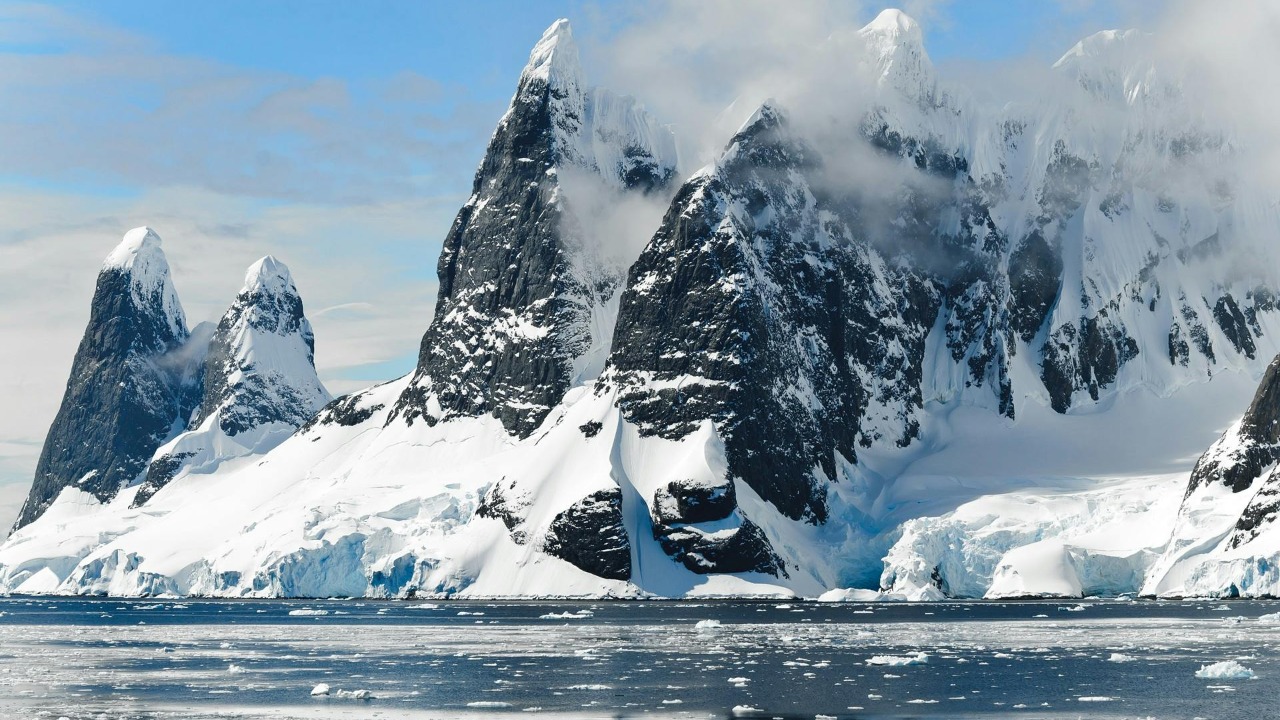
A pyramid-shaped mountain peak in the Ellsworth Mountains of Antarctica has captured global attention, appearing as a strikingly geometric formation. This natural wonder, revealed by melting glaciers, has been hidden beneath ice for millennia. Measuring roughly 1,300 feet tall, the structure is composed of natural rock, not human construction, similar to the world’s oldest pyramid at Gunung Padang in Indonesia, which archaeologists assert was formed by geological processes rather than ancient builders.
Discovery in the Frozen Continent
The pyramid-like formation in Antarctica first gained attention through satellite imagery, which highlighted its four-sided, stepped appearance reminiscent of ancient Egyptian structures. This discovery was made possible by the melting ice in the Ellsworth Mountains, a phenomenon attributed to climate change. As glaciers recede, they unveil geological features that have been hidden for thousands of years. Reports from February 2024 emphasize how climate change has played a crucial role in exposing such geological oddities in Antarctica, sparking both scientific interest and public fascination.
In addition to this prominent formation, other similar pyramid-shaped peaks have been identified in the region. Analyses from February 2024 have questioned the nature of these mysterious “pyramids” discovered in Antarctica, suggesting that they are natural formations rather than remnants of a lost civilization. The striking geometry of these peaks continues to intrigue researchers and conspiracy theorists alike, as they ponder the forces that shaped these unique landscapes.
Geological Origins of the Formation
Scientific consensus holds that the Antarctic pyramid is a nunatak, a rocky peak that protrudes from the ice due to erosion and tectonic activity over millions of years. Natural processes such as wind, water, and glacial movement have sculpted these angular shapes, creating formations that resemble human-made structures. This explanation aligns with expert analyses from March 2024, which debunk any artificial origins and attribute the structure’s geometry to Antarctica’s unique volcanic and sedimentary rock composition.
These natural processes are not unique to Antarctica. Similar formations can be found worldwide, where erosion and geological activity create pyramid-like profiles without human intervention. The Antarctic pyramid serves as a reminder of the planet’s dynamic geological history and the powerful forces that continue to shape its surface.
Conspiracy Theories and Public Fascination
The sudden visibility of the Antarctic pyramid in 2023 media coverage has fueled popular theories linking the structure to lost civilizations or extraterrestrial activity. Social media has amplified claims of hidden bases or ancient technology, as seen in reactions to the March 2024 report on the structure sparking wild conspiracy theories. These theories often capture the public’s imagination, offering tantalizing narratives that challenge conventional scientific explanations.
The psychological appeal of such mysteries is particularly strong in remote areas like Antarctica, where limited access and harsh conditions breed speculation. The allure of uncovering hidden secrets in one of the world’s most isolated regions continues to captivate audiences, even as scientific evidence points to more mundane explanations.
Comparisons to Other Natural Pyramids
The Antarctic feature can be compared to Gunung Padang in Indonesia, described in September 2025 reporting as the world’s oldest pyramid built 25,000 years ago. Archaeologists claim that Gunung Padang is a natural geological formation rather than a human-made structure, highlighting the power of natural forces to create pyramid-like shapes. This comparison underscores the global prevalence of such formations and the diverse geological processes that produce them.
Similarities in erosion patterns can be observed in various global sites, including the February 2025 account of a pyramid hidden for millennia emerging from ice. These examples illustrate how natural processes can create strikingly geometric shapes, challenging our perceptions of what constitutes a “pyramid.” By examining these formations, we gain a deeper understanding of the Earth’s geological history and the forces that continue to shape its landscapes.
Broader examples of natural pyramidal mountains worldwide further contextualize why such shapes occur without human intervention. The mysterious “pyramids” in Antarctica serve as a testament to the planet’s dynamic geological processes, offering a glimpse into the natural forces that have shaped our world for millions of years.
More from MorningOverview